After killing his grandparents at the age of just 15, Ed Kemper went on to murder eight women between May 1972 and April 1973, often violating and mutilating their corpses afterward.
The signs were there from the beginning. As a boy, Ed Kemper killed animals, decapitated his sisters’ dolls, and invented disturbing games. And at age 15, he murdered his grandparents and there was no turning back.
But when Kemper later confessed to killing six female hitchhikers in California in 1972 and 1973, as well as his mother and her best friend, the police didn’t believe him at first. They knew and liked “Big Ed” — the 6’9″ local man who was always hanging around and seemed like nothing more than a gentle giant.
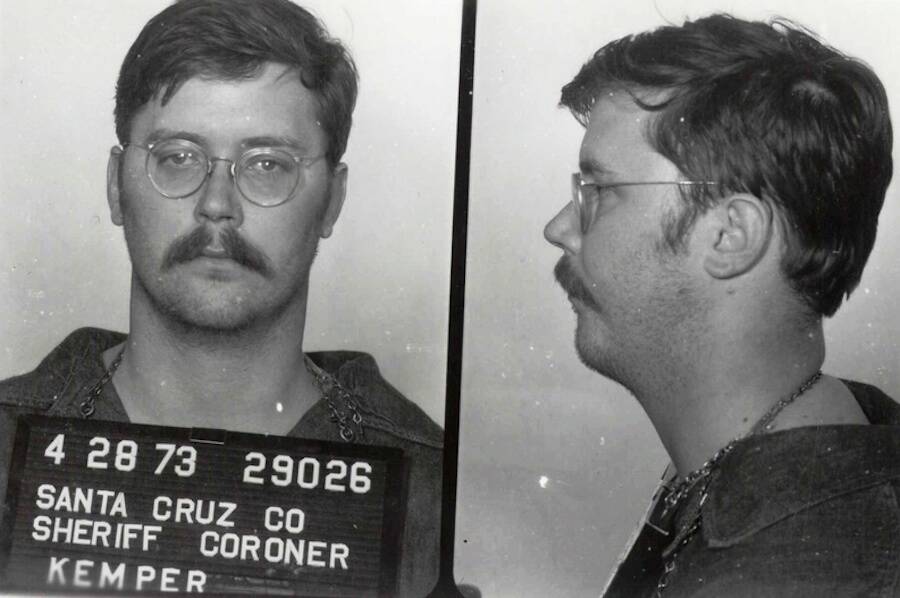
Wikimedia CommonsEdmund Kemper, the murderer who once terrorized California as the “Co-Ed Killer.”
In truth, he was anything but. Ed Kemper was a cunning serial killer who raped corpses, mutilated dead bodies, and buried his victims’ heads in his backyard. His high IQ of 145 only made him more dangerous — as he used his intelligence to slip away from his crime scenes undetected.
As chronicled in Netflix’s Mindhunter, Ed Kemper’s murders were absolutely horrific. But his real story is far more chilling than any TV show could ever depict.
The Troubled Childhood Of Ed Kemper
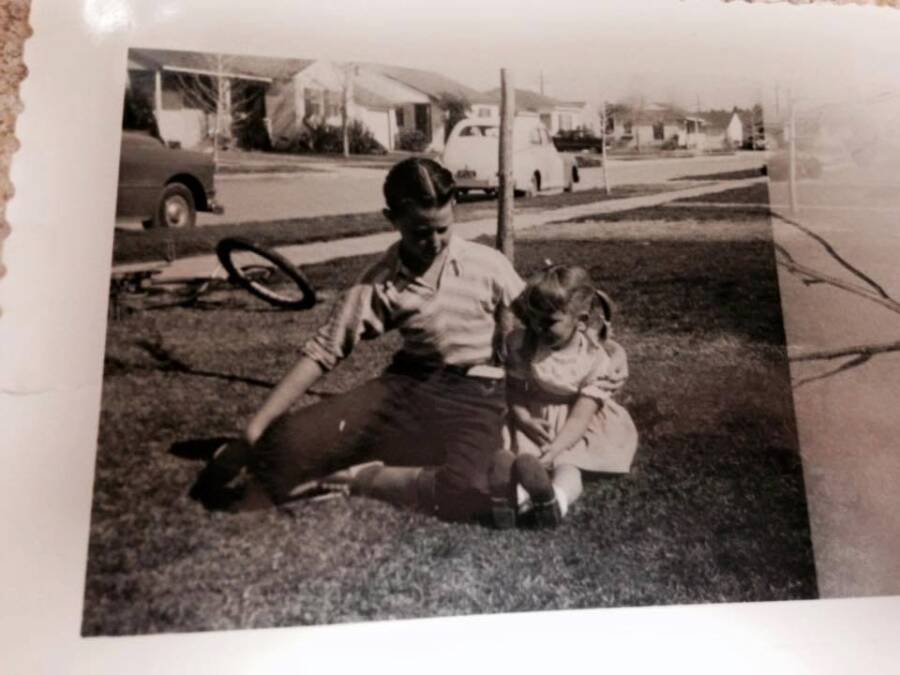
Facebook/Allyn SmithEdmund Kemper and his younger sister, Allyn.
Born on December 18, 1948, in Burbank, California, Edmund Kemper presented troubling behavior from an early age.
The future serial killer also had a tumultuous childhood. His mother, Clarnell Elizabeth Kemper, was an alcoholic who possibly suffered from borderline personality disorder. Her erratic behavior once led Kemper’s father, a World War II veteran named Edmund Emil Kemper II, to remark:
“Suicide missions in wartime and the later atomic bomb testings were nothing compared to living with Clarnell.”
She regularly berated Kemper’s father for his “menial job” as an electrician. And she refused to coddle her son for fear it would “turn him gay.” In that turbulent environment, Kemper began to develop dark fantasies early on. Fueled by these thoughts, he started decapitating his sisters’ dolls.
“I remember there was actually a sexual thrill — you hear that little pop and pull their heads off and hold [them] up by the hair,” Kemper later said. “Whipping their heads off, their body sitting there. That’d get me off.”
In addition, Kemper forced his sisters to play disturbing games — like “electric chair” and “gas chamber.” As if imagining where he might end up, Kemper had his sisters pretend to march him to his death.
He once even stalked his second-grade teacher while carrying his father’s bayonet. And when his sister Susan teased him about kissing the teacher, Kemper coldly responded, “If I kiss her, I’d have to kill her first.”
At the age of 10, Kemper’s disturbing behavior escalated to violence. After his father left the family in 1957, the young boy killed both of the family’s cats. He even buried one of the cats alive and later decapitated it.
Meanwhile, without Edmund Sr. around, Kemper’s mother began to focus her aggression on her teenage son. She made him sleep in the basement, claiming that he might hurt his sisters. And she regularly berated and insulted him, telling him that no woman would ever fall in love with him.
At the age of 14, Kemper had enough. He ran away from his mother’s house to live with his father. But by that point, his father had remarried another woman and he sent his son to live with his grandparents.
There, Ed Kemper would become a killer for the first time.
Ed Kemper’s First Victims: His Own Grandparents
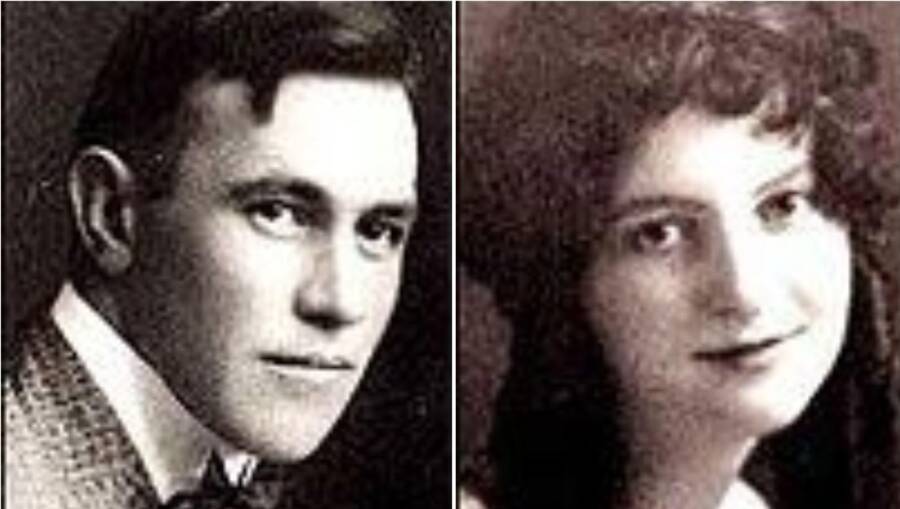
Find A GraveEdmund Kemper’s first victims were his grandparents, Edmund Emil Kemper and Maude Kemper.
For Ed Kemper, living on his grandparents’ ranch was no better than living at home. He later called his grandfather Edmund “senile” and complained that his grandmother Maude was “emasculating.”
She “thought she had more balls than any man and was constantly emasculating me and my grandfather to prove it,” Kemper later said.
After clashing with his grandmother on numerous occasions, Kemper became angrier and angrier. “I couldn’t please her. It was like being in jail. I became a walking time bomb and I finally blew,” he said.
On August 27, 1964, Kemper got into yet another explosive argument with his grandmother. But this time, the furious 15-year-old boy shot Maude Kemper in the head — with his grandfather’s .22 caliber rifle.
Then, as his grandfather walked up the driveway toward the house, Kemper shot him, too. Both of his grandparents were now dead because of him.
He killed Maude, he later explained, because he “just wanted to see what it felt like to kill Grandma.” But Kemper killed his grandfather so that he wouldn’t find out that his wife had been murdered.
After they were both dead, he called his mother and confessed to everything. Kemper was then sent to the criminally insane unit of the Atascadero State Hospital. There, doctors determined that Kemper had paranoid schizophrenia — as well as a very impressive IQ.
But despite the crimes he committed, Ed Kemper only stayed in the hospital for a few years. On his 21st birthday in 1969, he was released. Kemper then went to live with his mother, who was then working as an administrative assistant at the University of California in Santa Cruz.
The Horrific Murders Of The “Co-Ed Killer”

Bettmann/Getty ImagesAiko Koo, 15, one of Ed Kemper’s victims.
Free again, it didn’t take Ed Kemper long to indulge his murderous urges. But at first, he initially tried to live a normal life.
After being denied a job as a state trooper — because he was deemed too large at 6’9″ and 300 pounds — Kemper decided to take up an available position at the Department of Transportation.
As he drove around California, Kemper noticed lots of women hitchhiking. So, he started to give them rides. “At first I picked up girls just to talk to them, just to try to get acquainted with people my own age and try to strike up a friendship,” Kemper said. He picked up over 100 girls without incident.
But he couldn’t suppress the urge to kill. When later asked what crossed his mind when he saw a pretty girl, Kemper said: “One side of me says, ‘Wow, what an attractive chick. I’d like to talk to her, date her.’ The other side of me says, ‘I wonder how her head would look on a stick?'”
By 1972, Kemper had turned to a life of violence yet again. On May 7th, he picked up two Fresno State students, 18-year-old Mary Ann Pesce and 18-year-old Anita Luchessa, near Berkeley, California.
Kemper brought the women to a wooded area nearby, intending to rape them. But he panicked — and stabbed and choked the two women to death.
He then stuffed them into his trunk and drove to his house in Alameda. On the way, a cop stopped him for a broken taillight but did not search the car. If he had, he would’ve found the bodies of Ed Kemper’s victims inside.

Bettmann Archive/Getty ImagesEdmund Kemper enjoys a smoke with a detective. The Co-Ed Killer’s amicable attitude fooled almost everyone during his crime spree and even had his investigators enjoying his company after he turned himself in.
Once home, Kemper raped the bodies. He then dismembered them, placed the body parts into plastic bags, and disposed of them. Ed Kemper’s victims were hidden somewhere in a ravine near Loma Prieta Mountain.
From there, Kemper continued his murder spree, killing again on September 14, 1972. Like with his first murders, Kemper picked up a hitchhiker, 15-year-old Aiko Koo, who had missed her bus to dance class.
During this encounter, Kemper accidentally locked himself out of his car but was able to persuade the young teenage girl to let him back inside. He then choked her unconscious, raped her, and killed her.
After stuffing Koo’s body in his trunk, Kemper recalled looking down at his latest kill with pride. He said that he “admir[ed] [his] catch like a fisherman.”
Kemper soon began to risk getting caught — just for an additional thrill. He hung out at a bar called the Jury Room, which was popular with police officers. There, he made friends with local cops, who called him “Big Ed.” Kemper enjoyed being so close to the people trying to catch him.
And even though Kemper moved back with his mother in 1973, he murdered three more college students he picked up around the nearby campus.
He even buried a severed head from one victim in his mother’s garden and left it facing toward her bedroom. According to him, he did this because his mother “always wanted people to look up to her.”
Kemper’s Final Murders And Confession

Public DomainEd Kemper shows cops where he buried some of the bodies. His cheerful demeanor made the stories of Ed Kemper’s victims all the more horrifying.
In truth, Ed Kemper’s mother had been his real target the entire time. “[My victims] represented not what my mother was, but what she liked, what she coveted, what was important to her, and I was destroying it,” he said.
And living with Clarnell again brought Kemper right back to his childhood. “My mother and I started right in on horrendous battles, just horrible battles, violent and vicious,” he later explained.
Everything culminated on April 20, 1973. That night, Kemper bludgeoned his mother to death with a claw hammer while she was sleeping. He then decapitated her and raped her severed head before using it as a dartboard. He also screamed at the head for an hour straight.
As if that weren’t enough, Kemper also cut out her tongue and larynx and placed them in the garbage disposal. But the mechanism couldn’t break up the tissue properly and spit her remains back into the sink.
“That seemed appropriate,” Kemper quipped, “as much as she’d bitched and screamed and yelled at me over so many years.”

Public DomainDetectives dig in the Co-Ed Killer’s yard in search of the remains of Ed Kemper’s victims.
Even more shocking, he then invited his mother’s best friend, Sally Hallett, over to the house. With a convoluted idea about a cover story — Kemper thought that he could say that his mother and her friend went on vacation together — Kemper murdered Hallett and stole her car.
He then drove to Colorado, certain that he would soon see the two murders in the news. But after not hearing anything for a while, Kemper ended up calling the police from a phone booth. And he confessed to everything.
At first, the police didn’t believe that “Big Ed” could be a killer. But Kemper soon began to describe things that only the Co-Ed Killer could know.
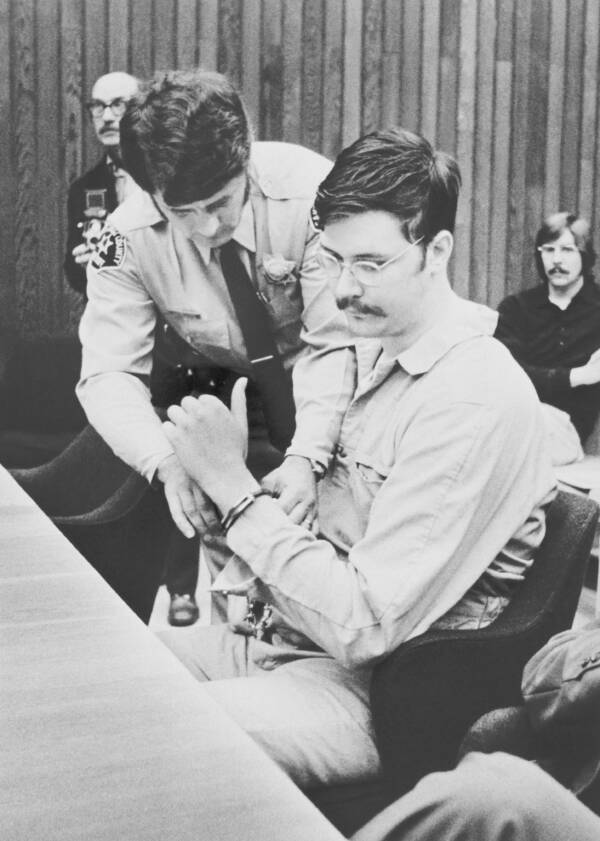
Bettmann/Getty ImagesThe shocking stories of what happened to Ed Kemper’s victims horrified the nation.
When asked why he stopped killing and turned himself in, Kemper said, “It wasn’t serving any physical or real or emotional purpose. It was just a pure waste of time… Emotionally, I couldn’t handle it much longer.”
He continued, “Toward the end there, I started feeling the folly of the whole damn thing, and at the point of near exhaustion, near collapse, I just said to hell with it and called it all off.”
Kemper was arrested and later convicted of eight counts of first-degree murder. Kemper attempted suicide twice and even requested the death penalty, but was ultimately given seven concurrent life sentences instead.
Where Is Ed Kemper Now?
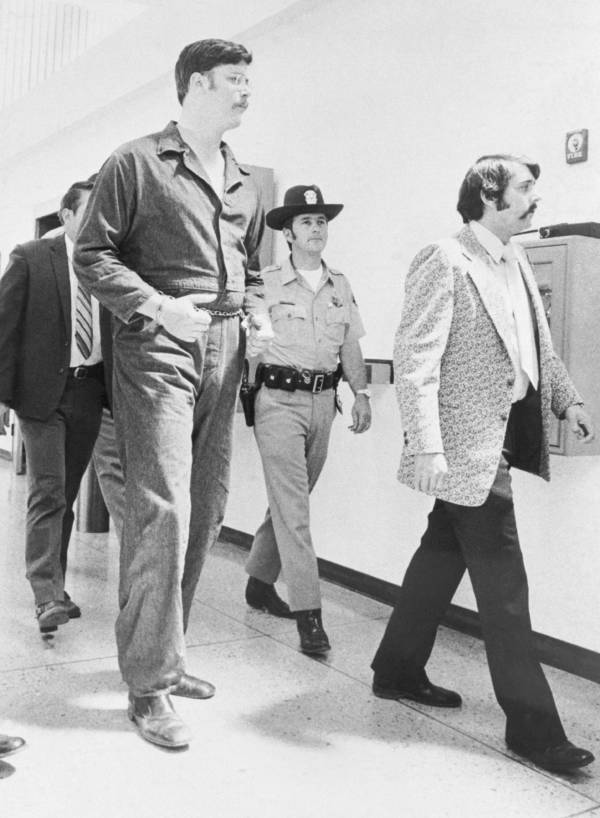
Bettmann/Getty ImagesEdmund Kemper being escorted into Judge Donald May’s court by the police.
Ed Kemper was imprisoned at the California Medical Facility alongside other notorious criminals like Charles Manson and Herbert Mullin. Kemper, who is now 72 years old, still resides in that same prison to this day.
During his early years behind bars, Kemper willingly participated in a number of interviews with reporters and law enforcement officials. Before long, he was even meeting with the FBI to discuss his heinous crimes and why he committed them — in a chillingly objective conversation.
As chronicled in season one of Netflix’s crime show Mindhunter, Ed Kemper’s testimony about his state of mind during his murders was integral to law enforcement’s understanding of how serial killers operate.
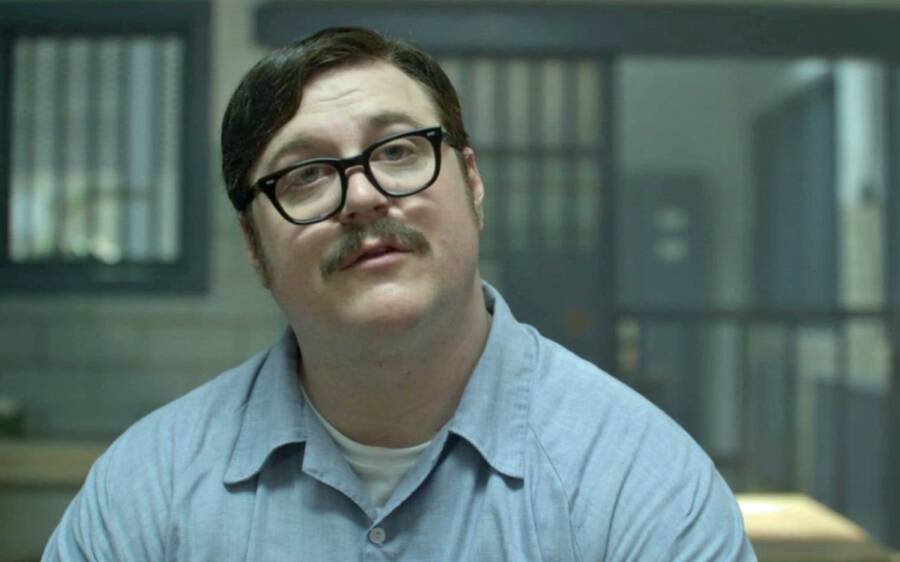
NetflixEd Kemper, as portrayed by actor Cameron Britton, on the Netflix series Mindhunter.
In recent years, the Co-Ed Killer has garnered a reputation as a model prisoner. Now, Ed Kemper is in charge of scheduling other inmates’ appointments with psychiatrists and has spent over 5,000 hours narrating audiobooks of stories like Dune and Star Wars.
But some people who knew Kemper personally have doubts that he has changed at all. “It’s laughable,” said Kemper’s half-brother, who goes by an alias to protect his identity. “[Kemper] is a complete sociopath.”
“He could look you straight in the eye telling you how sorry he is for everything he did while at the same time plotting your demise and you’d never even have a clue.”
Now that you’ve read about Ed Kemper, learn the story of Wayne Williams, another convicted killer featured on Mindhunter. Then, take a look at Carl Panzram, the most cold-blooded serial killer in history.





